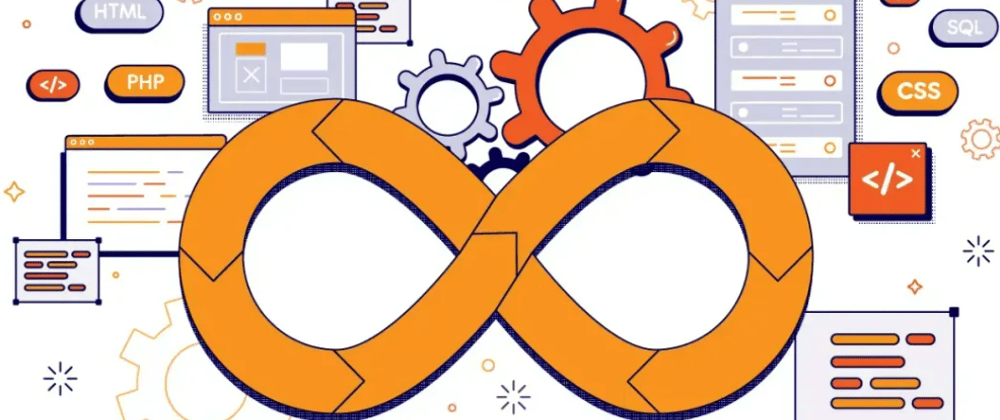Introduction
End-to-end testing plays a pivotal role in IT projects, offering substantial value. In a landscape characterized by incremental software development and the frequent release of micro-features, it is imperative to ensure that all architectural components seamlessly coalesce to serve the application's ultimate purpose consistently.
However, end-to-end testing has garnered mixed opinions, some asserting its difficulty and sustainability issues based on past experiences. In this blog, we delve into this topic and provide a concise list of five best practices for enhancing your approach to end-to-end testing, ready for immediate adoption.
End-to-End Testing: A Comprehensive Overview
End-to-end testing, as the name suggests, involves scrutinizing every facet of your technological product, mirroring the actions of real users. These tests encompass a meticulous examination of even the minutest user interactions within the application.
During this testing process, user actions, including button clicks, form submissions, checkbox selections, and menu choices, are meticulously simulated. The primary objective is to ensure that all functionalities operate seamlessly and to identify and rectify any potential issues that might lead to application crashes.
The Need for Speed in End-to-End Testing
End-to-end testing offers a valuable escape from the time-consuming and repetitive aspects of quality assurance. While it is typically less arduous than integration testing, it can be more time-intensive than unit and functional testing.
End-to-end test suites often require hours, potentially leaving development teams in a feedback vacuum. This delay hampers their ability to make necessary improvements swiftly.
Hence, the need for rapid end-to-end testing is paramount. It's the key to ensuring the application's correct functionality, as delays in this process can lead to system errors.
The Advantages of End-to-End (E2E) Testing
End-to-end testing is the comprehensive verifier of all the fundamental elements of software or applications. It meticulously assesses the essential functionalities and the interconnected backend layers of the application, ensuring the harmonious operation of the software and seamless interaction among its architectural components.
This meticulous approach results in the development and delivery of high-quality software and ensures consistent user experiences.
Now, let's delve into some best practices for E2E testing
Maximizing Stability in Your End-to-End Tests: 5 Tactics
1. Embrace Codeless Test Automation
In automated testing, various types often demand coding skills, a requirement perfectly valid in some contexts, such as unit testing, which developers employ to validate their code assumptions. However, as of 2020, the software testing landscape involves a broader array of roles beyond developers.
In the context of End-to-End (E2E) testing, creating test cases without coding is a significant advantage. Codeless test automation liberates you to engage testers and professionals who may lack coding expertise. This, in turn, allows developers to direct their focus toward feature development and defect resolution.
A word of caution, though: It's essential to opt for a codeless testing solution that remains flexible enough to incorporate code when necessary. This adaptability is crucial for accommodating unforeseen application changes and helps future-proof your testing efforts. While you might require developer assistance for custom code, you won't need to replace your chosen tool.
2. Maintain an End-User Focus
When crafting test designs and formulating test cases, adopt the mindset of an end-user. Concentrate on the application's features rather than its technical implementation. An effective practice is to encompass only high-value user pathways in your testing strategy, emphasizing how end-users navigate the system to achieve business objectives.
Key scenarios, such as user sign-ups on an e-commerce platform, creating sales orders, or planning deliveries, should precede your end-to-end testing. These scenarios are not only pertinent to end-users but also significantly impact essential business objectives like revenue, quality, and efficiency.
To capture the user perspective, leverage documents such as user stories, acceptance tests, and Behavior-Driven Development (BDD) scenarios where available. Step into the shoes of someone using the application for the first time and address critical questions:
- What is the user trying to accomplish?
- Is it simple and intuitive to locate the desired features?
- Can the user attain their goals through a few straightforward steps?
Business users can contribute the end-user perspective, saving your team valuable time crafting meaningful and relevant business scenarios.
3. Harness the Power of Risk-Based Testing
In the initial stages of implementing your testing approach, there might be a temptation to test everything comprehensively. While striving for high test coverage is commendable, practical constraints, like limited resources, often come into play. Even with automation across testing levels, achieving full-scale testing remains a formidable challenge. This is where the concept of risk-based testing proves invaluable.
Risk-based testing is an approach that recognizes that not all segments of an application are equal. Various factors come into play, including code complexity, the criticality of specific areas for the business, and the frequency of changes, among others. By assessing these factors for each part of the application, you can pinpoint areas that are more likely to harbor defects and have the potential to cause significant disruptions if they malfunction. Concentrating your testing efforts on these high-risk areas, particularly in the initial phases, is a pragmatic approach.
4. Sequencing Matters
In a robust Quality Assurance process, the primary objective is to unearth application flaws at the earliest stage in the software delivery cycle when the cost of rectification is at its minimum. Therefore, prioritizing unit and integration testing is crucial to maintaining a sturdy and dependable software delivery process.
End-to-end (E2E) testing aligns perfectly with this approach, as it excels at identifying business-process-related errors that are often elusive in earlier delivery phases. To streamline your testing sequence, commence with unit and integration testing. Subsequently, when embarking on E2E testing, initiate critical smoke tests to confirm seamless communication between integrated applications, followed by sanity checks and other high-risk test cases.
The rationale is straightforward: pinpointing the source of a defect is relatively uncomplicated when a single unit test fails. However, as tests grow in complexity and span multiple application components, the potential points of failure multiply, rendering debugging a more challenging task.
End-to-end testing thrives on a foundation of structure, organization, and a profound grasp of business logic, ensuring a well-ordered and effective testing process.
5. Ensure the Integrity of Your Test Data
The efficacy of your test cases hinges not only on their quality but also on the data they're fed. It's imperative to provide your tests with high-quality data in the right quantities precisely when required.
Merely copying data from the production environment and considering it sufficient poses several challenges. Production data often needs more representation of critical edge-case scenarios essential for testing. It may also need more data related to recently added database tables. Most notably, there's the grave risk of inadvertently exposing sensitive information, such as personally identifiable data or confidential business information.
To mitigate these risks, a robust Test Data Management (TDM) process is indispensable. The recommended approach is to generate test data automatically. In cases where production data cloning is necessary, employ data masking capabilities to safeguard against the leakage of sensitive information into non-production environments.
Enhance Test Coverage with HeadSpin's End-to-End (E2E) Testing Solution
- Multi-Device Testing: HeadSpin allows you to conduct E2E testing on various real devices, including smartphones, tablets, and IoT devices. This ensures your application is tested on the devices your users are using.
- Real User Conditions: HeadSpin's extensive global device infrastructure enables you to test under real user conditions, such as locations, networks, and devices, to ensure your app behaves correctly in different environments.
- Performance Testing: With HeadSpin, you can evaluate the performance of your application under various scenarios, including load testing and stress testing, to identify bottlenecks and improve responsiveness.
- Automation and Scripting: HeadSpin supports automated testing with scripting capabilities, enabling you to create and test scripts to validate various aspects of your application's functionality.
- Reporting and Analytics: HeadSpin's AI-driven platform offers comprehensive reports and analytics, enabling in-depth test result tracking, issue identification, and data-informed decision-making for enhancements.
- Comprehensive Test Scenarios: HeadSpin enables you to create and execute complete test scenarios covering user interactions, including user authentication, navigation, data input, and more.
Summing Up
In the ever-evolving landscape of modern technology, the pursuit of faster, high-performance, and consistently reliable applications is unceasing. Achieving these qualities necessitates a thorough examination of every component through end-to-end testing.
While these tests can be time-intensive due to their meticulous nature, the expeditious execution of end-to-end testing is essential for the smooth maintenance of your CI/CD pipeline.
Ultimately, the ultimate goal of any software development endeavor is user satisfaction. To attain this, it's imperative to guarantee that the system functions flawlessly from start to finish. End-to-end testing emerges as the most effective means to validate the system's intended operation.
In this context, a tool like HeadSpin significantly improves your end-to-end testing, guaranteeing top-quality applications and user satisfaction.
Source: https://www.headspin.io/blog/a-guide-to-securing-a-stable-environment-for-end-to-end-testing







Top comments (0)